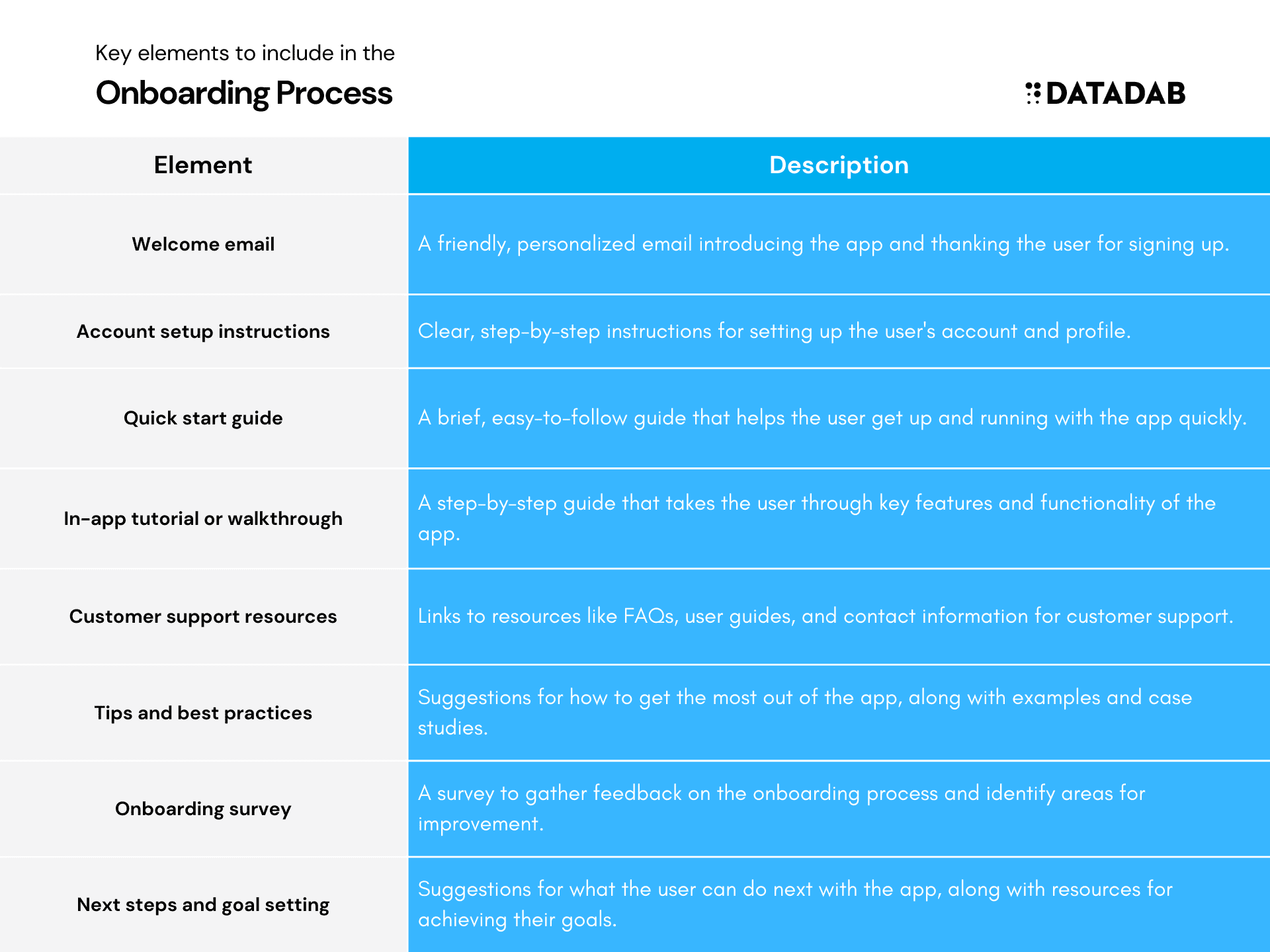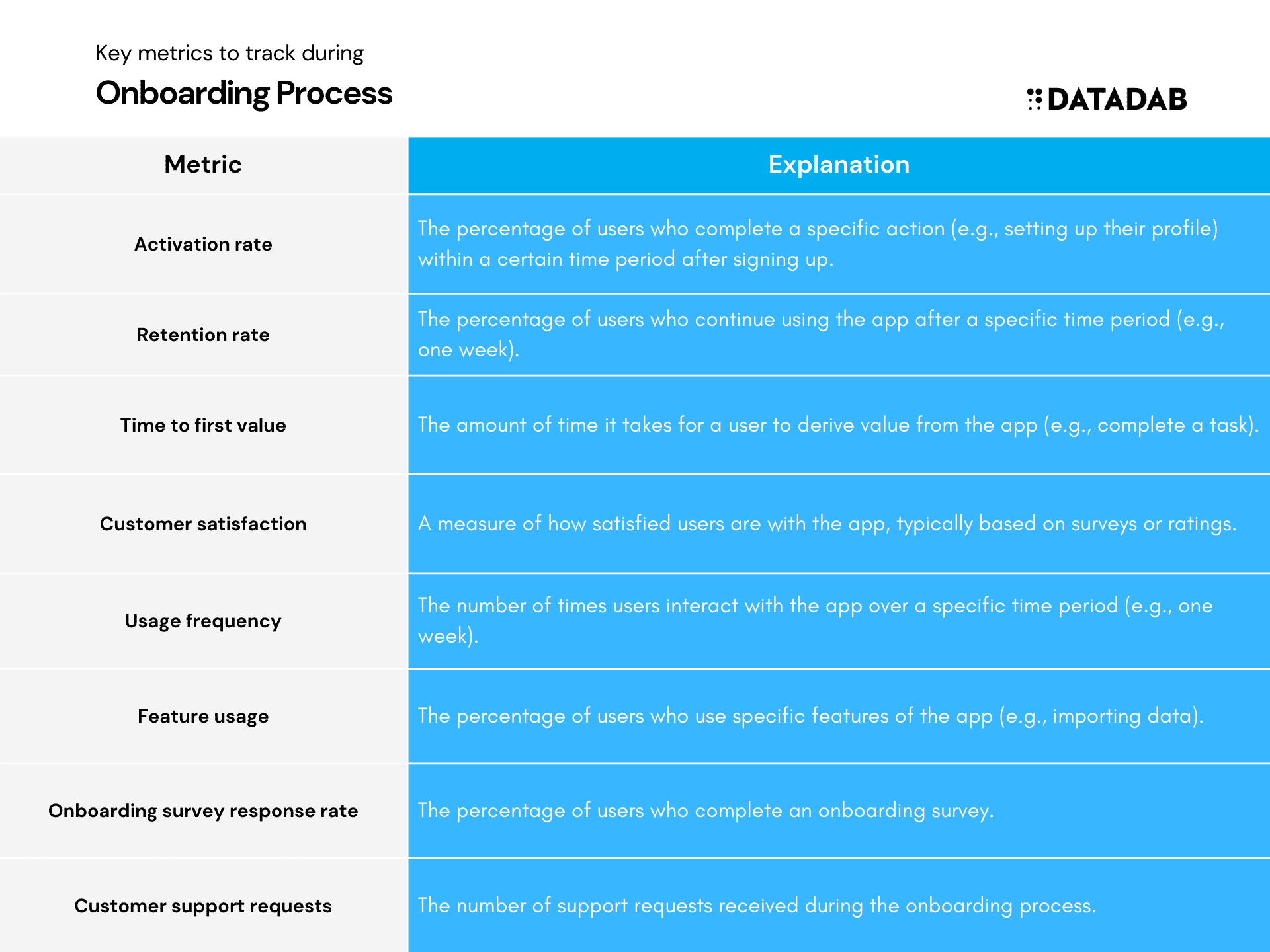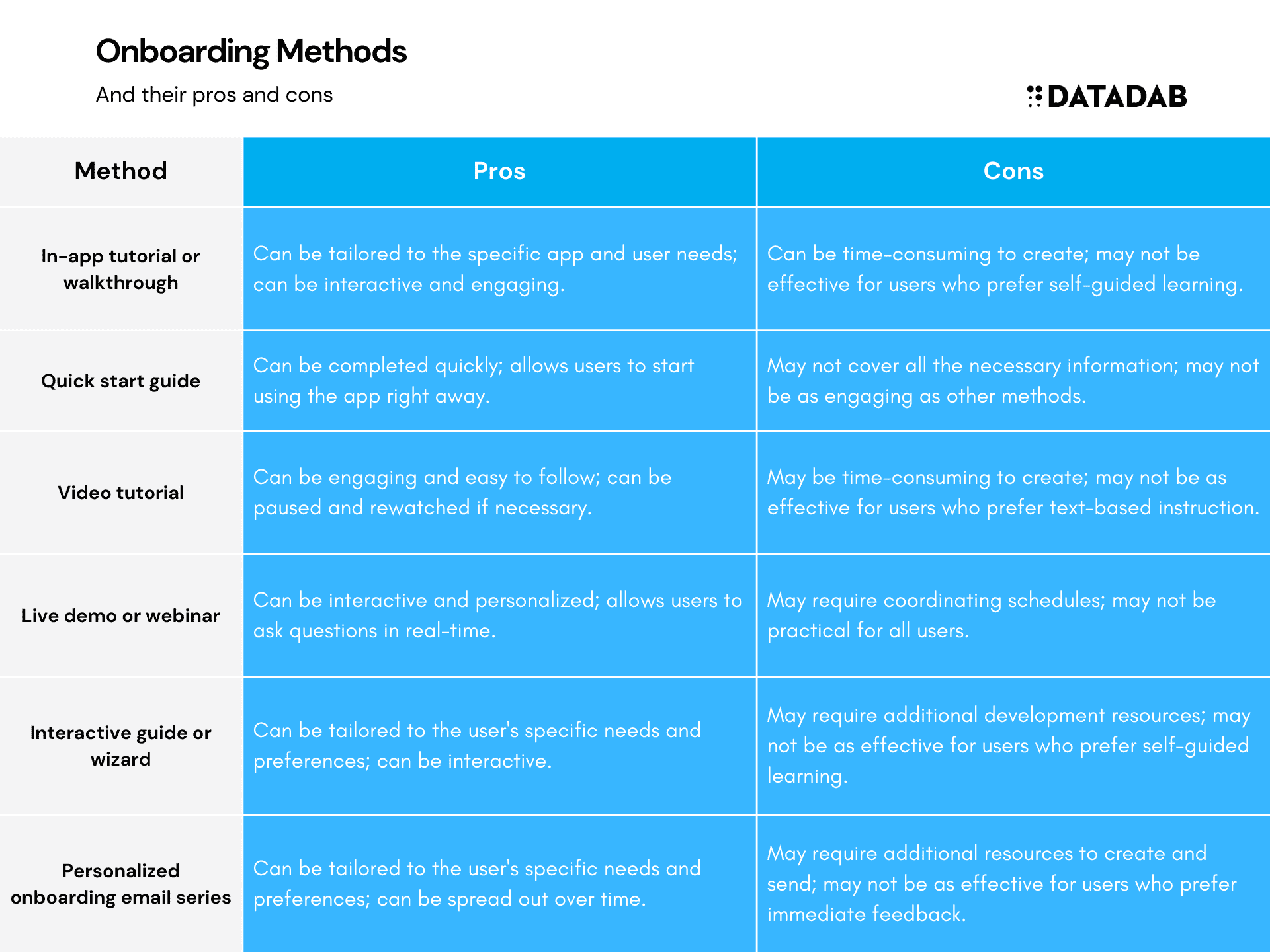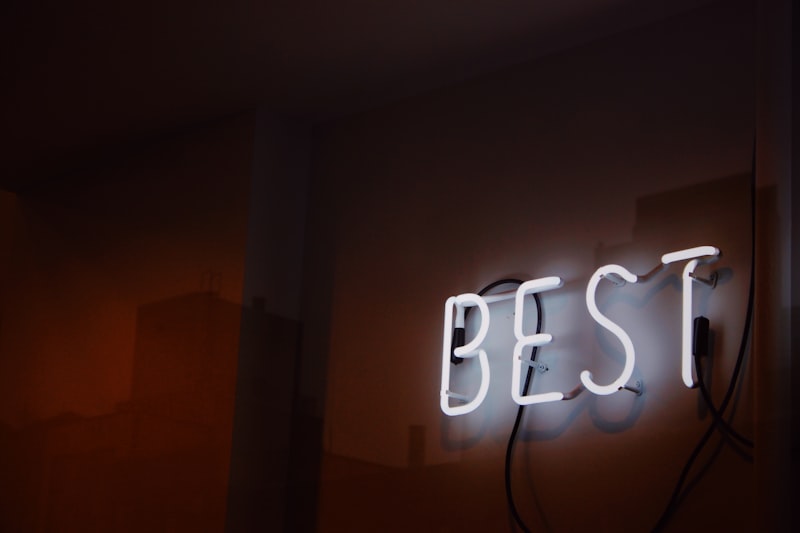"A successful onboarding experience is key to retaining customers and building loyalty."
- Tony Hsieh
When you meet someone new, the first impression is everything. The same is true for a customer's first experience with your product. Every moment a new user spends with your product during onboarding is an opportunity to make a positive impression and propel them towards becoming a loyal, successful customer.
However, most customers won't get there on their own. Your job as an onboarding specialist is to know what it takes to guide customers towards success and make sure they have the best possible experience getting there.
It's time to stop guessing if your onboarding process is working and start treating your customer onboarding with the same attention and care that you give to the rest of your marketing efforts.

Identify your ideal customer.
First and foremost, you should identify your ideal customer. What type of person is most likely to buy your product? The more specific you can be, the better. This will help you target your user onboarding strategy without wasting time on folks who won’t benefit from it.
For example, if developers are a small part of your customer base and aren’t terribly excited about using your tool, then there’s no point in obsessing over their onboarding experience. Instead, focus on the customers who really get value from your software and want to see it succeed.
That doesn't mean that you should ignore everyone but your ideal customers. But by starting with this narrow group, you can create an excellent onboarding experience for them and impress them enough to become brand advocates. After all, happy customers are more likely to recommend a product or service than satisfied ones — so finding the right way to connect with them is critical.
Create a customer journey map.
In a market where people are bombarded with information about products, services, and brands at various points along their path to purchase, it's easy for product teams to lose track of a user's journey from the first interaction all the way through the end of their purchasing. Even if you have an extensive knowledge base about your target market and customer journey, it can be challenging to distill that information into a customer journey map.
However, creating customer journey maps can help you develop your customer onboarding flow—the sequence of tasks that customers go through when they first use your product or service—and build a better experience. This single visual can help you see how users interact with your product or service (or how they don't), which helps you create a better experience for them in the future.

Narrow down the right paths.
Use data to narrow down the right paths for your users.
Now that you’ve identified all the ways users could navigate through your product, it's time to narrow them down to the ones that matter most. Your goal is to determine which paths are essential, and which aren't as necessary. There are two ways you can do this:
- Using data derived from your analytics tool of choice (i.e., Amplitude, Heap, etc), identify key user journeys by analyzing top landing pages and common flows between those pages. The most frequently used paths will help you prioritize what to include in your onboarding process.
- Look at any existing or past research that outlines key flows in your product—be it surveys, customer interviews, or usability tests—and build out a personas matrix with each journey mapped out against each persona type. You can then identify key use cases for each persona by checking off the most critical paths across the board. In this case, "most important" could mean high-value tasks (such as subscriptions or purchases) or major pain points that affect success rates for new users (for example, confusing navigation).
Use data as a guideline, not as a rule.
Use data as a guideline, not as a rule.
When done well, onboarding experiences are informed by user research and testing data. But it's important to keep in mind that you can have too much of a good thing. Data is excellent at telling us how to improve our users' experiences on our sites, but it can also lead to bias if we let it.
In the case of an onboarding experience, we could be tempted to create an onboarding process that many a time looks like this:
The user is forced into completing each step before they reach the next one.
At first glance, this might seem like a great idea: "If users don't complete all these steps, then they're not going to get the best possible experience out of my product." But what if those steps aren't actually driving value for your business? What if the user completes only two out of four steps and has a better experience than another user who completed all four?
If you force your users through a sequential checklist that doesn't allow for customization or variation, you won't know what's really working and what isn't.

List what you want to learn from each onboarding step and create goals accordingly.
We've compiled a simple checklist to help you along your way to keep onboarding simple and effective.
When creating your onboarding experience, make sure you do the following:
- Create goals based on the learnings you want to get from each step of the onboarding process. For example, if your goal is to increase the trial to paid conversion, look at how many new paid customers completed their onboarding to draw a correlation. You should also track how long it takes them before upgrading their account.
- Make sure your goals are attainable but meaningful ones; otherwise, people will stop caring once the initial rush of excitement wears off, and they get tired of the same onboarding process over and over again (our onboarding flows were more than twice as effective when we looked at this from this angle).
- Whenever possible, create a video specifically aimed at learning about each feature or behavior within your product; this ensures that users don't feel like everything is being crammed down their throat when learning about it for the first time. Videos are particularly helpful in communicating complex functionality since they can be used in different ways—as an instructional video, as an interactive tutorial or walkthrough, or even just providing additional context.
Be clear about the next steps and make it easy for users to take them.
But onboarding isn't just about making users aware of your product. It's also about showing them how to use it. And that means being clear about the next steps and making it easy for users to take them.
Establish a clear call-to-action for each step in your onboarding process, whether having a user click on a button or providing specific instructions on how to move forward. Also, make sure there’s an obvious path of action for the user to follow.
In other words, please don't leave your users wondering what they should do next (or worse, be confused by several different actions they can take). Keep these elements focused and streamlined.
Personalize the experience when possible, especially in the beginning stages.
The more personalized you can make the onboarding experience, the better. And that doesn't mean just adding a user's name wherever possible.
You should personalize the experience based on information in a user's profile. For example, if you have an app that recommends restaurants nearby, and you know a person is a vegetarian based on their profile information, being able to customize suggestions so they all fit with that user's dietary needs will take things one step further and leave a lasting impression of helpfulness.
Monitor your metrics and ask for feedback regularly.
You might already be collecting data on your onboarding process. If not, you should definitely start considering it. A lack of data (or a lack of an actionable way to use it) can lead to false assumptions and massive inefficiencies. Metrics are important because they show you what’s working and what isn’t—and when something isn’t working, it’s time to change your strategy.
To sum up, creating a successful onboarding experience relies on a lot of different pieces falling into place. But when done right, you can create an experience that will grab users' attention and entice them to try your product again and again. So, always:
- Know who your ideal customer is.
- Create a journey map for your ideal customer.
- Narrow down the critical paths in this journey map.
- Use data to help guide you, but don’t let it rule you.






